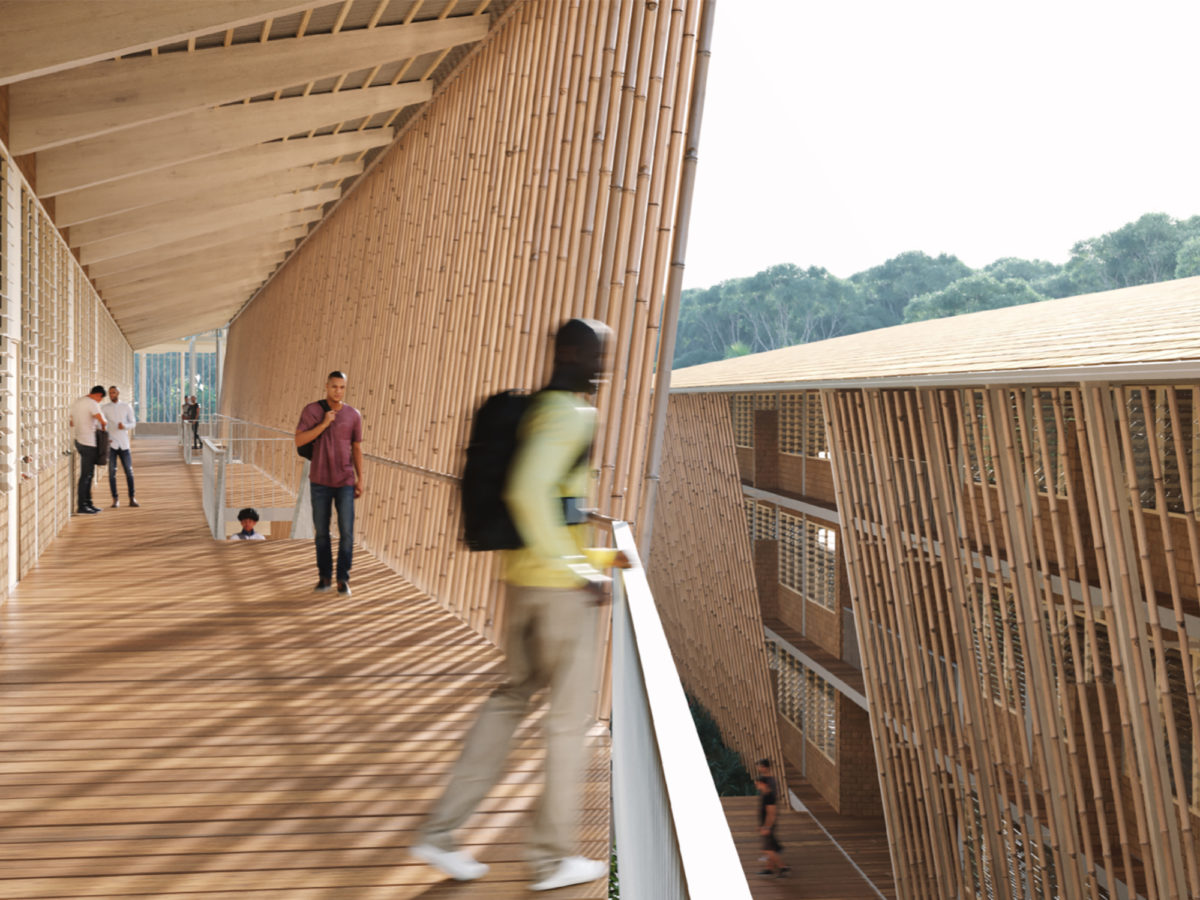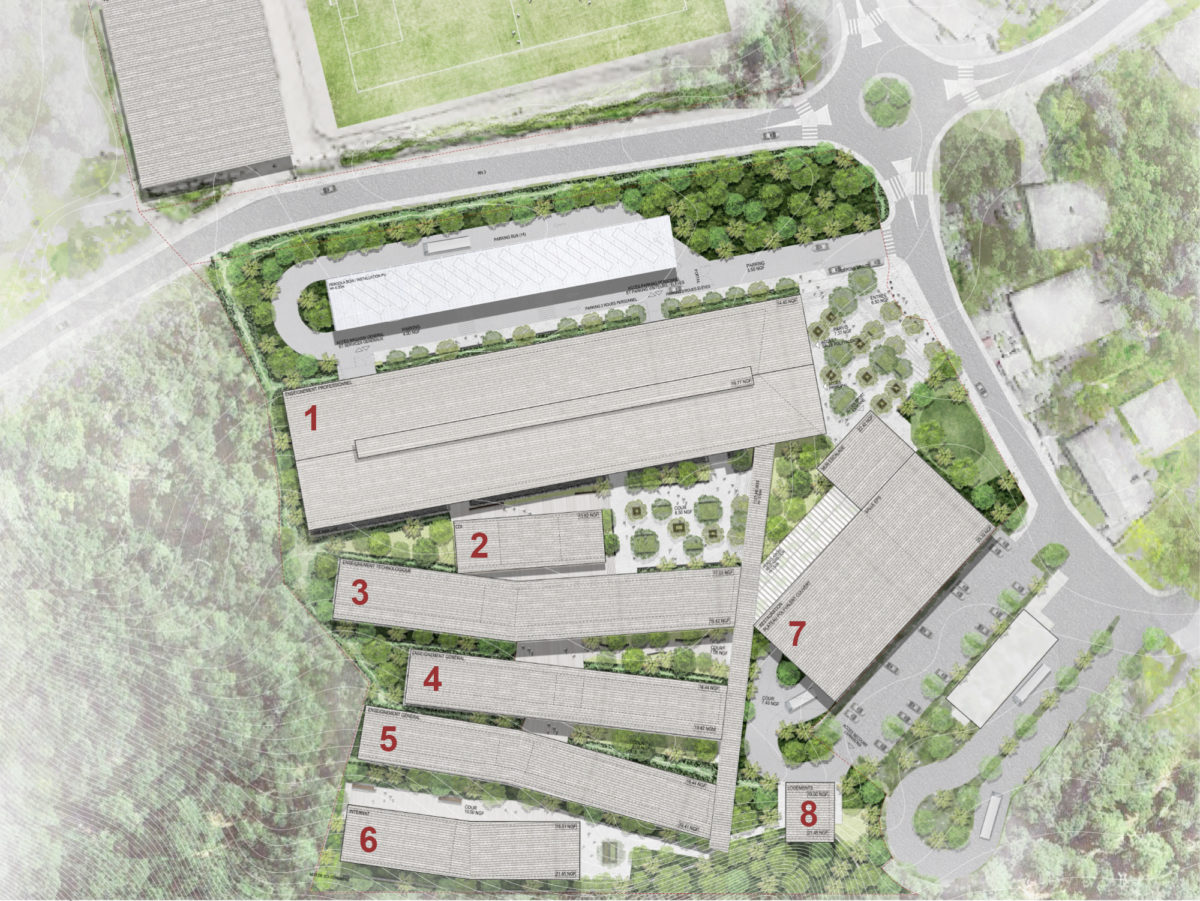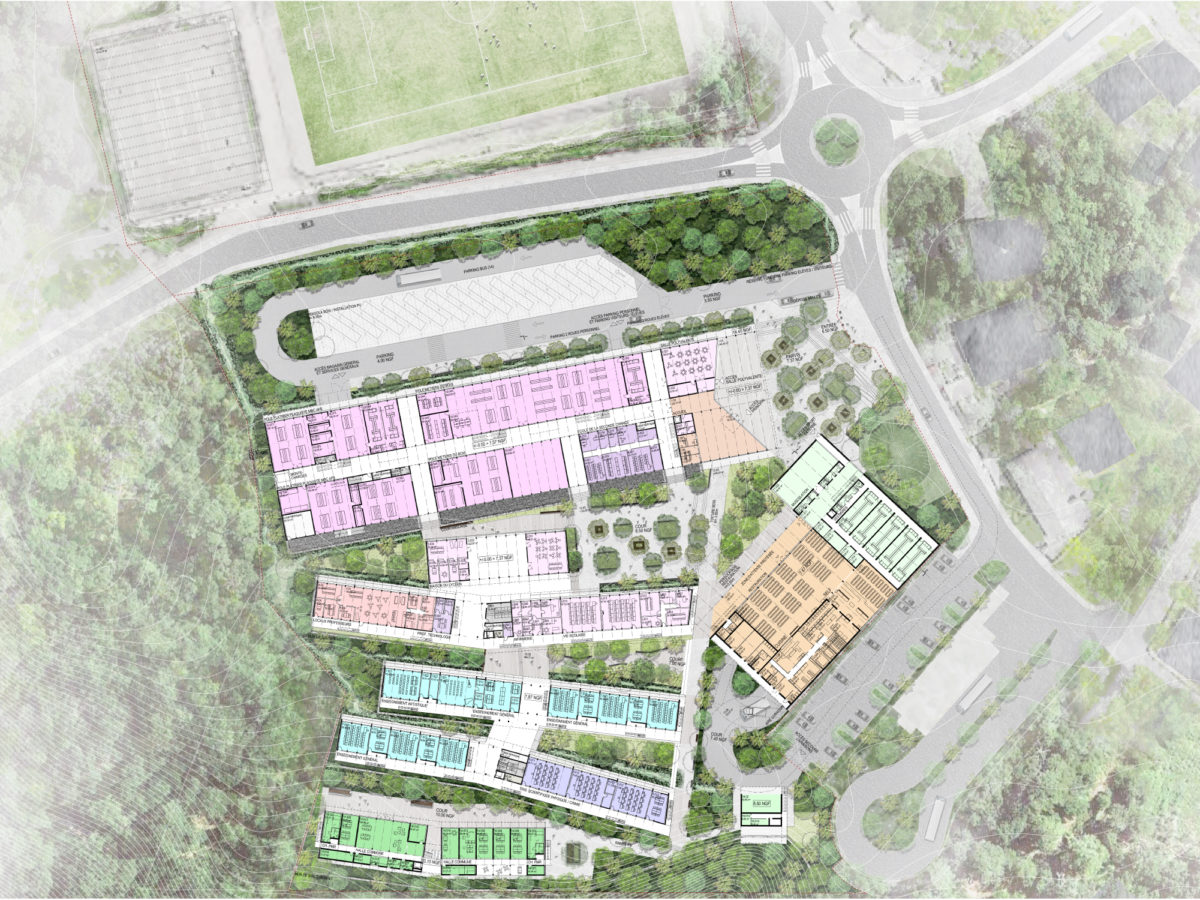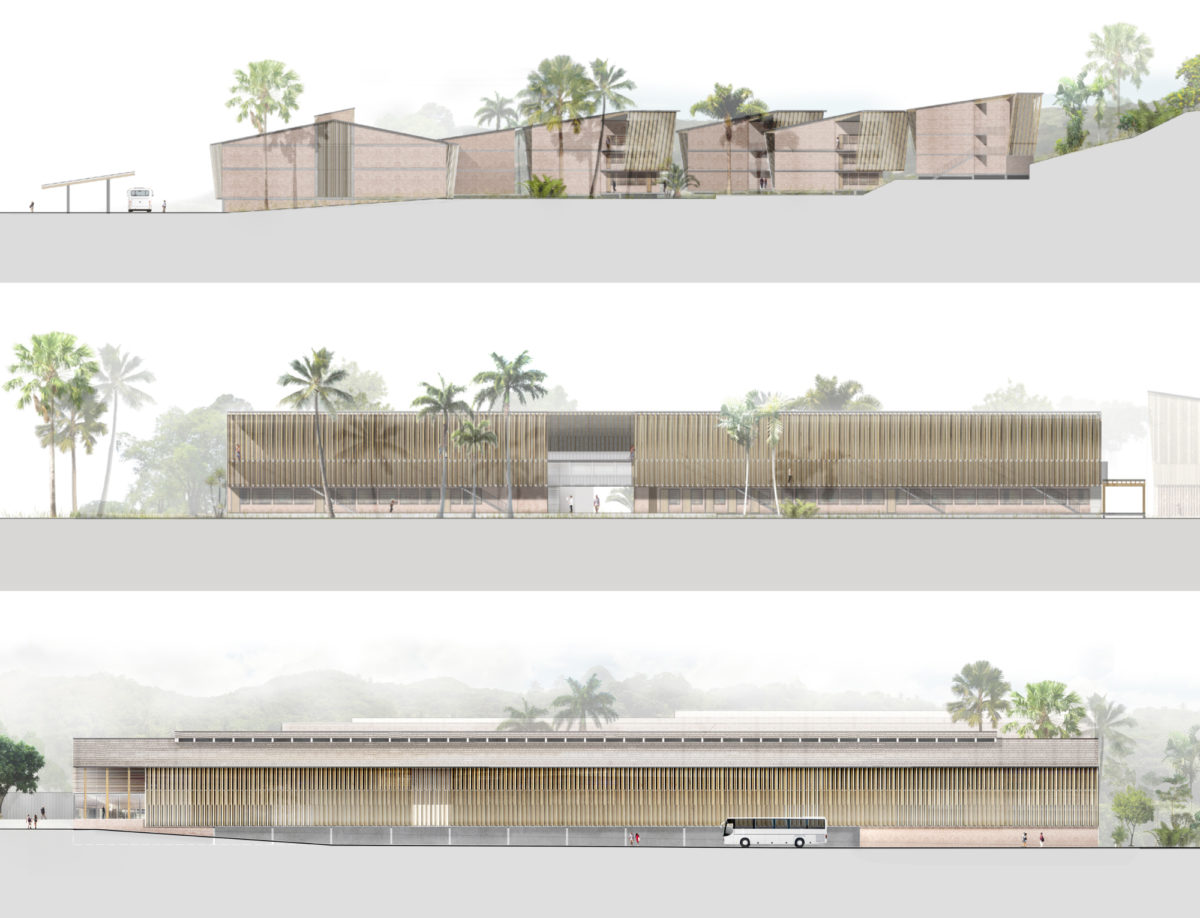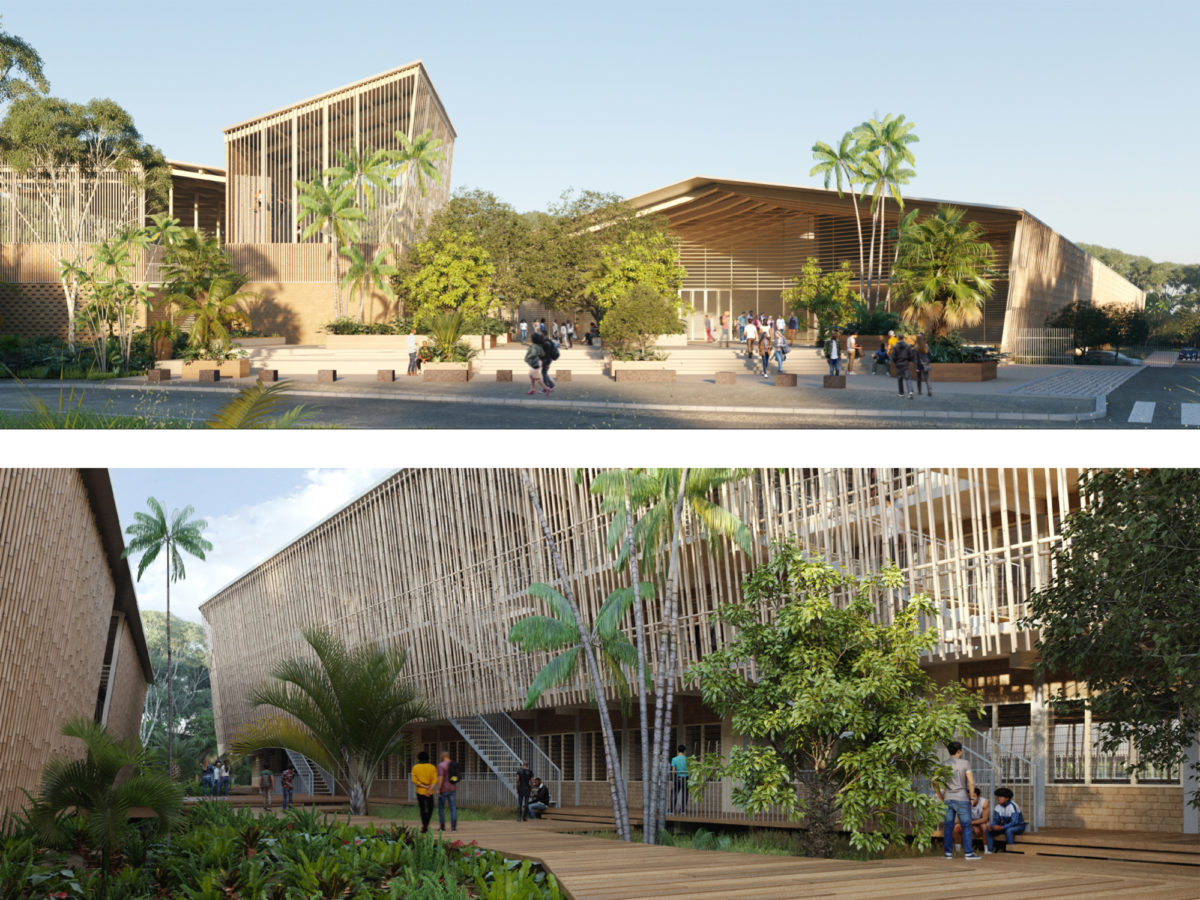
Tani Malandi High School, Mayotte (FR)
> DU DIGITALBuilding a school in Mayotte means dealing with many issues on several levels in a very different way than here in Europe – educationally, but also socio-economically and ecologically. The small Comorian island of Mayotte, north of Madagascar, belongs to France and is part of the EU. Of the approximately 180,000 inhabitants, more than half are younger than 20. In view of the strong population growth and the resulting increase in the number of pupils, the outdated temporary multi-purpose secondary school needs to be replaced with new buildings. The architecture should meet the requirements and goals of a state school, but also consider the specific needs of young Mahorans. The adolescents and young adults need a framework that promotes their education and vocational training, but is also linked to their cultural tradition and familiar environment.
We decided to combine the know-how of Austrian and French architects and our local partners in Mayotte for the new construction of the Lycée Tani Malandi. The team Dietrich | Untertrifaller Architectes, Fabienne Bulle Architecte et Associes and Endemik Mayotte won the 2020 competition. The large-scale project with capacity for over 2,000 pupils includes not only classrooms but also sports facilities, a school restaurant with kitchen and a boarding school. The fluent connection of the different functions creates an inspiring space for working, eating, sleeping and relaxing.
Urban Context
Located on the national road on the outskirts of the city, the school marks the kick-off for further development of the area to the neighbouring city to the south and around the new commercial hub. As an outpost of this urbanisation, the school shares its sports facilities with the locals.
Dense spatial programme
The individual functions of the school are divided among several buildings of different sizes, almost parallel to each other and staggered in height on the flat hill. The largest and tallest building with the main entrance, the vocational school, the administration and a multi-purpose hall sits at the bottom of the hill towards the main road. Set back from the site boundary, the large-volume cuboid creates parking space and shields the school from the traffic of the busy national road. Behind it follows a small house with a library and recreational facilities. The classrooms are located in three long, slightly bent buildings. The boarding school and a small staff residence on the edge of the forest benefit from the quiet location. On the east side, slightly set back from the ensemble, the compact gymnasium forms a further buffer against the traffic junction.
A long north-south gallery connects all units from the entrance to the boarding school and eases the flow of movement. It forms the backbone onto which the individual elements are implanted – a functional circulation, but also a place for social interaction. Walkways, courtyards, wooden terraces, steps and ramps create flowing, covered and shaded outdoor areas where pupils can freely move around and spend time.
Local and culture-related materials
Clay, wood, bamboo, basalt – these omnipresent natural materials emphasise the close relationship between the school and its surroundings, between nature and architecture. Bamboo façades remind us of the woven fences of the Mahoran houses. The verandas of traditional homes inspired the wide overhanging roofs and long arcades in front of the classrooms. The gables of the gymnasium and the school building, covered with lime plaster, refer to the name of the high school: “Tani Malandi” is the name of the white clay from the surrounding caves used for make-up at weddings or ritual ceremonies.
Client: Ministère de l’Éducation Nationale, de l’Enseignement Supérieur, de la Recherche et de l’Innovation, Rectorat de Mayotte
Location: Chirongui, Mayotte
Architecture: Dietrich | Untertrifaller with Fabienne Bulle Architecte et Associés and
Endemik Mayotte
Project management: Claire Leroy
Competition: 2020
Construction: 2024-2026
Area: 23,300 m²
Capacity: 2056 students, sports facilities, school restaurant with kitchen, boarding school
Partners
Statics, building services, electronics: Ingerop Conseil et Ingenierie / building physics: Le Sommer Environnement, Paris / landscape: Uni Vert Durable, Piton Saint-Leu, Réunion / acoustics: Aida Acoustique, Paris / OPC: Oteis Mayotte, Mamoudzou / BIM Manager: Atelier Juno / costs: Alize Conseil / kitchen: Corail Ingénierie /// video: Asylum / rendering: Jeudi Wang


